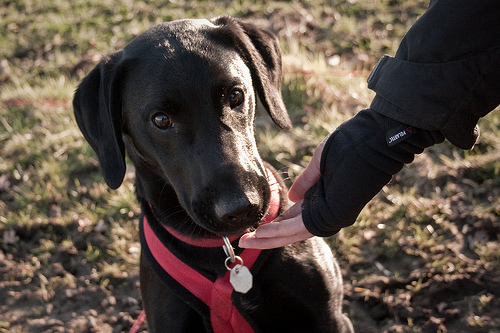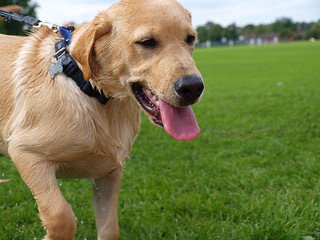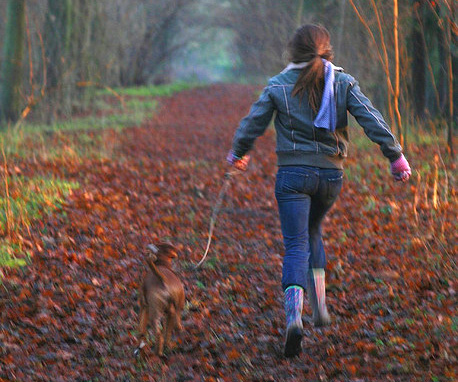Dog Behaviour Part 1: The Basics
23/02/2014
With Crufts just a few days away, it seemed appropriate to talk a little bit about canine training and behaviour, including a look at the different training techniques, both modern and traditional.
A well-behaved dog is a delight to be around, whereas a dog that is easily excitable, jumps up, barks and is out of control is unpredictable. In the home this can be annoying for the members of the household and unnerving for visitors, especially those who are uncomfortable around dogs and animals. Outside the home a dog that doesn’t come when called, pulls on the lead and behaves aggressively can be a risk to passers by, is easily lost or injured in road accidents and can make life difficult for their owner.
As with children a lesson learned whilst young sticks around longer than one that is taught at a later stage. Never has the phrase ‘You can’t teach an old dog new tricks’ been more apt! Of course it is possible to teach an old dog new tricks, but it is a lot harder than teaching a young dog. Dog behaviour relies greatly on the age of the dog and also its breed, personality and past experiences. Many rescue dogs that have been ill treated and unloved will suffer from behaviour problems, look out for more on these particular problems in Part 2.
There has been a lot of publicity recently around controversial electric shock collars for dogs. Many are calling for them to be banned simply for welfare reasons, whilst dog behaviourists also argue that far from solving problem behaviour in dogs they may actually exacerbate them (www.apbc.org.uk/articles/shockcollars). The members of the APBC (The Association of Pet Behaviour Counsellors) feel that “behaviour problems can be best addressed through behaviour modification programmes based on an understanding of the motivation for each dog’s behaviour, and the use of humane, reward-based training methods”.
One such method is clicker training, a form of positive reinforcement involving a clicker and a tiny treat to distinguish and reinforce desired behaviour in dogs, which is favoured by many dog owners and animal behaviourists. Those who disagree with clicker training argue that dogs may not behave without the clicker and/or the treats, may overeat if given excessive treats, may have trouble hearing the clicker in noisy environments or at a distance or that sensitive dogs may be scared of the clicker. Clicker training enthusiasts maintain that if training is carried out correctly then all of these reasons for concern can be eradicated. Treats should be pea-sized for a medium-sized dog and adjusted accordingly for the dog in question. Commands and signals can also be used in conjunction with clickers so that should an occasion arise when the clicker is inappropriate the dog will still be well-behaved.
Probably the most popular form of dog behaviour training is simply rewarding the positive behaviour and ignoring the unwanted behaviour. The basic skills outlined below are based on this principle. Mastering some basic obedience skills will make daily life with your dog easier and more fun. It will also strengthen your bond and the trust between you. It is worth taking some obedience classes with your dog to learn the basics from an expert before moving onto teaching tricks and advanced skills. Obedience classes can also be a great opportunity for you to meet other dog owners and for your dog to socialise too.
Before undertaking any training it is important to remember these points first:
- Be consistent in training and make sure other family members and close friends who may be around your dog know the commands and rules too.
- Train using rewards for positive behaviour that you want to see again. Rewards can be treats, food, toys and affection.
- Regular exercise that offers both physical and mental stimulation will dramatically affect the behaviour of your dog. Unwanted behaviour is often down to lack of exercise. For more information on exercise and your dog take a look here.
- Ensure your dog is receiving the correct quantities of a good quality, nutritionally-balanced food to keep them satisfied but not over- or under-fed. Feed at the same times each day. Concerns over obesity arising from using food as a reward can be met by saving some of the daily portion of food to use in training or for stuffing Kongs or activity balls in games.
- Make sure your dog has a safe, quiet place to go when he wants to rest or ‘hide’ from a perceived danger. This is particularly important for dogs that are settling in to your home, such as young dogs and puppies or rescue dogs. Family members and visitors may need to be reminded to let your dog have some peace and quiet.
Basic Skills
- Coming on Command. It is best to practice in the home first, then the garden or yard, then a larger, enclosed space before moving into a space with no boundaries. Ensuring your dog is wearing a correctly-fitted, secure collar is an essential starting point. Keeping your body language relaxed, stay at ground level with open arms, smile and use a happy, excited voice to call your dog. Reward the dog’s return every time with a treat or affection. An alternative method is to stand in front of your dog, issue the command and move backwards a little luring the dog with a treat. The distance can be increased each time.
- Jumping Up. Whilst only done out of excitement and a wish to greet people, jumping up should be discouraged. It is alarming for small children and those who are nervous around dogs and annoying for everyone else, especially if the dog has dirty feet and the person they are jumping on is all dressed up in a pristine white frock or a light suit! The best training method here is to turn away, stop eye contact and ignore, encouraging other family members and visitors to do the same to maintain that all-important consistency. Reward sitting or standing quietly straight away to reinforce the desired behaviour.
- Pulling on the Lead. Addressing this annoying habit will prevent you from getting a sore back, shoulder or arm and will increase the amount of control you have over your dog in outside situations. Try putting your dog on a long lead and letting him walk on. When he pulls stop walking. If he comes back reward him, if he keeps pulling call him back then reward him. Set off again and keep repeating the process until he learns that if he pulls he doesn’t go anywhere.
- Sitting Holding a treat close to your dog’s nose say the command and gradually move the treat up and over the dog’s head. Usually as their nose goes up, their bottom goes down. When they sit give the treat with plenty of affection too. You can gradually wean them off the treat by putting the treat in your other hand or on a table nearby and you can reduce the need for the hand signal by making it less expressive each time too.
- Lying Down Starting with the dog in a sitting position and holding a treat close to their nose, give the command and bring the treat down between their front feet. This should bring the dog’s head down to the floor. By drawing the treat along the floor in front of him, he should then lie down. Give the reward and plenty of affection on completion. As above the treat and then the hand signal can be gradually phased out and the exercise can be tried out in environments with increasing levels of distractions.
Implementing these basics will drastically improve life in and outside the home with your dog. It will make visitors to your home feel more at ease and people you meet in the street will be pleased to see you. Games will be more fun when you have more control over their initiation, their end and the behaviour of your dog during them. Part 2 will address particular issues of dog behaviour, such as separation issues, jealousy issues and car travel.
Read part 2 here
Sources: www.rspca.org.uk, www.apbc.org.uk, www.battersea.org.uk





